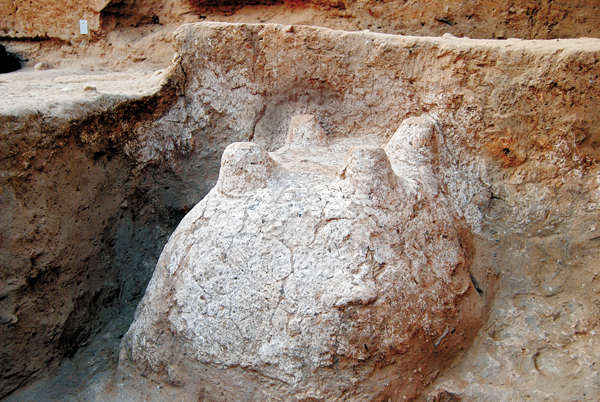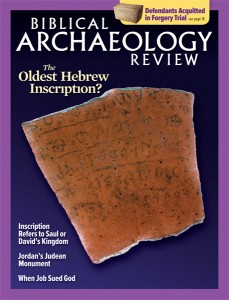It was a typical domestic structure in Philistine Ashkelon from about 1200 B.C.E. (roughly contemporaneous with the settlement of the Israelites in adjacent Canaan). In two of the rooms were typical Philistine hearths in the floor. In one of the smaller rooms of the house, however, was a feature the archaeologists did not recognize—a white lime-plastered mound of earth about 2 feet high and around 2.5 feet in diameter.1 Roughly pyramidal in shape, it had a flattened top. On each of the four corners was a slightly rounded projection—horns?
Archaeologists Lawrence Stager, Daniel Master and Adam Aja didn’t recognize it. It was not like anything they had ever seen. It is of course tempting to call it a Philistine altar. At first, the archaeologists considered whether it might have some relation to the Israelite four-horned altars, but the Israelite examples are burning installations with a flat top enclosed by a margin to contain the combustion. And there was no evidence that anything had been “burned” on this “altar”—or that it was designed for this purpose.

The next thought was that perhaps these little bumps on the Ashkelon installation were somehow related to Aegean “horns of consecration” often associated with libations rather than combustion. But these “horns of consecration” are not only quite different but also distant in time. The suggestion was ultimately rejected.
Already a library member? Log in here.
Institution user? Log in with your IP address.

